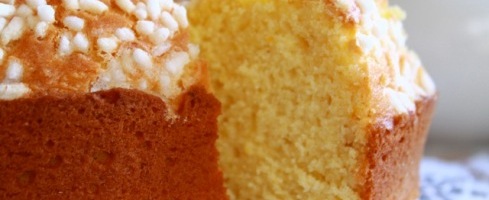Carnevale, Carnival or Mardi Gras (Fat Tuesday), is a huge Catholic festival celebrated forty days before Easter, before Ash Wednesday, with masquerade balls, parades and public street parties. Masks, or maschere, are one of the most important parts of Carnival, and cities all over Italy celebrate this festival in one way or another, although Venice is certainly the most well-known Italian city for its traditional Carnival masks and parties. The streets are full of people dressed in costumes, and all over town artists and singers entertain with performances and songs. It is a unique adventure worthy of the experience! This festive event is also celebrated by eating special treats prepared only during this season. Chiacchiere (literally “chit-chat” or “small talk”, pronounced key-AH-ker-ay) are crispy fritters made with flour, sugar, butter, eggs and liquor, although this last ingredient may be eliminated during Lent. Chiacchiere are known by different names depending on the region from which they originate. For example chiacchiere and lattughe (because they recall the appearance of lettuce leaves) are found in Lombardy, cenci (meaning rags) and donzelle in Tuscany, frappe in Emilia Romagna and bugie (meaning “lies”) in Piedmont. Whatever you call them, they are delicious, delicate pastries that both adults and kids love. I remember making this special snack with my grandmother; this was part of our annual carnival celebration. We had a lot of fun making them, and I delighted in eating them – it is still a very memorable occasion. I now make chiacchiere each Carnival season with my kids too, part of our family cooking tradition!! Chiacchiere trace their origins from ancient Roman times when they were called frictilia, tasty sweet dough fried in lard, the most common frying fat available at the time.
CHIACCHIERE (SWEET CARNIVAL FRITTERS)
Preparation time: 1 ½ hours Servings: 6-8

INGREDIENTS
500 g (3 cups) flour 00
70 g (1/3 cup) granulated sugar
7 g (1 heaping teaspoon) baking powder
1 pinch salt
60 g (4 tablespoons) unsalted butter, room temperature and diced
3 large eggs + 1 egg yolk
½ teaspoon vanilla extract
30 ml (2 tablespoons) dry Marsala (grappa, brandy)
Oil for deep frying
Powdered sugar
DIRECTIONS
1. In a large bowl sift together the dry ingredients (flour, sugar, baking powder and salt)
2. Add the butter and mix with a pastry cutter. In a small bowl beat the eggs, then add the eggs, vanilla extract and Marsala to the dry ingredients, mixing well. Blend the dough well with floured hands until it is smooth and elastic
3. Remove the dough from the bowl and knead it for about 10 minutes on a floured surface. Wrap the dough in plastic wrap and let it rest for at least 30 minutes in a cool place
4. Divide the dough in four equal parts and roll out one part at the time (keeping the rest in the plastic wrap until ready to work). Rolling out chiacchiere is just like rolling out pasta dough.
ROLLING OUT BY HAND. To roll out your dough you need a wooden pin – mattarello – (about 80 cm long and 4 cm diameter, 37 x 2 in). Dust each piece lightly with flour and roll out to the desired thickness, about 2 mm. Cut the dough into rectangular strips using a table knife or a serrated pastry wheel (10 x 5 cm; 4 x 2 in) and let them rest for about 5 minutes on a cotton dish towel. Make two parallel cuts down in the middle of each strip about 5 cm (2 in) long, taking care to leave the ends of the strips intact.
ROLLING OUT BY MACHINE. A hand-cranked pasta machine is the best to use. Kids especially love this part, so I usually have some help! Start out using the widest setting. Run the dough through for about 5-6 times until the dough is smooth. If the sheet tears dust it with flour. Continue to run each sheet through the machine, reducing the thickness a notch at a time, until you reach the desired thickness. I use setting number 5. The dough should be very smooth. Once you reach the desired thickness, follow the same procedure as above for cutting the dough.
5. In a heavy skillet gradually heat some frying fat to the required temperature of about 180°C (350 °F). If you do not have a thermometer use this easy test. Drop in one cube of bread (about 2.5 cm, 1 in). If the cube browns after 60 seconds, the fat will be ready for frying. Fry the strips for about one minute until golden on both sides, turning them once
6. Remove them from the skillet and let rest on a grid covered with paper towels to absorb the excess oil
7.Sprinkle liberally with powdered sugar when they are cool.
Note: Deep frying is a dry heat cooking method. Choose your cooking fat carefully. Fats with high “smoke points” are the best. Peanut oil, safflower oil, sunflower oil and canola oil are good choice. Lard is very good frying fat too, because it withstands very high temperatures. It was commonly used in the past in many cuisines, but it is used less now because it has a strong, distinct taste that can cover the food’s flavor. -Paola
Tags: Canola oil, Lard, Marsala, Pastry, Peanut oil, Safflower oil, Sunflower oil






















